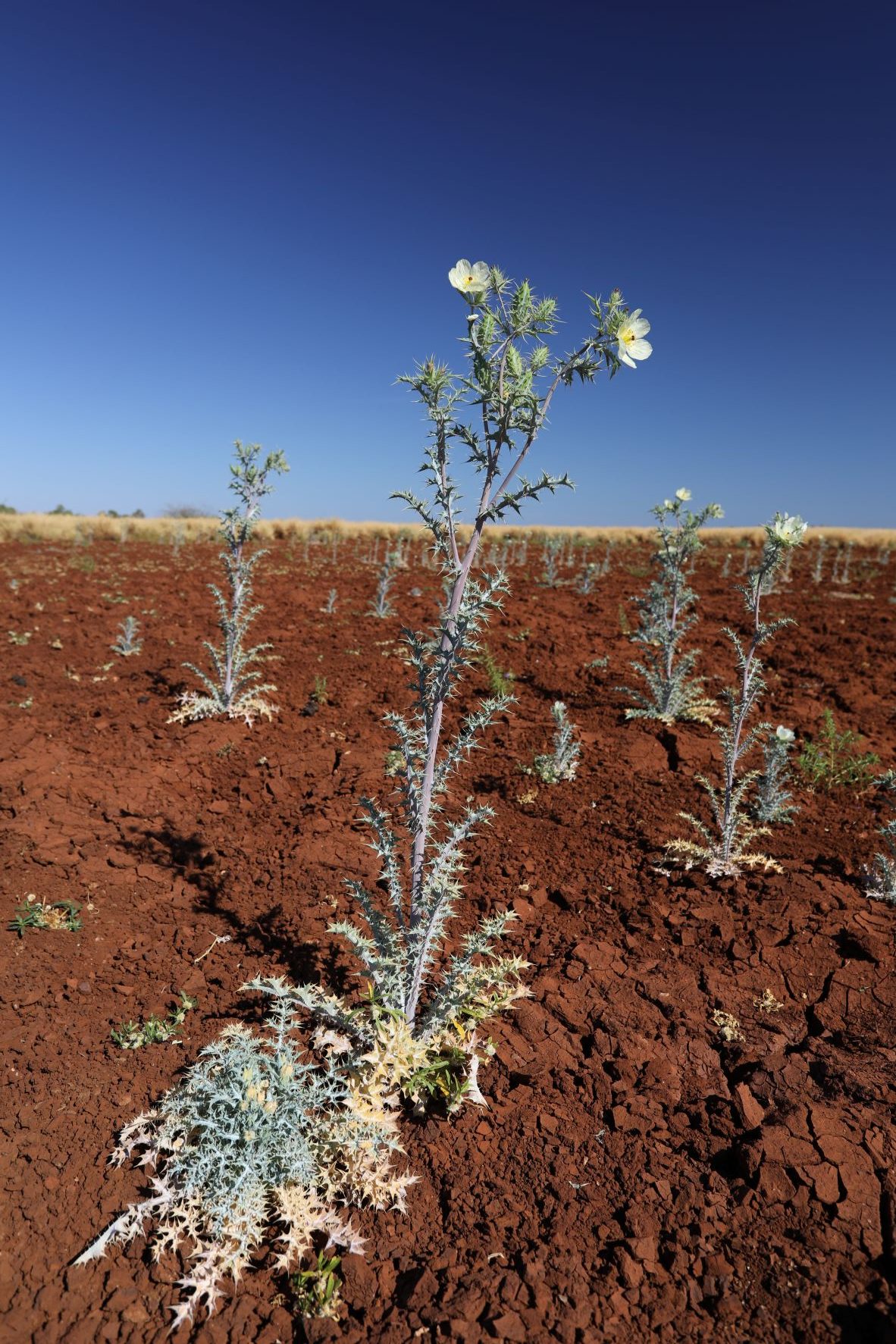Mexican poppy in Western Australia is the common name for two species of invasive poppy from the Papaveraceae family: Argemone mexicana and Argemone ochroleuca subsp ochreleuca. Both species originate in Mexico and the range extends to central America and into southern Texas. Both species have similar in appearance but A. mexicana petals are orange in colour while A. ochroleuca is pale yellow to white. First recorded in Australia herbaria in 1882 around Moree and Gunnadah, it has thought to have arrived as a contaminant in imported wheat (Parsons & Cuthbertson, 2001). First recorded in Western Australia in 1921 at Beverley in the Avon Valley catchment in southern Western Australia, but its highly invasive range is Pilbara region, particularly along water courses. Occasional plants are found in southern WA but populations rarely persist.
Taxonomy
Argemone ochroleuca Sweet subsp. ochroleuca, Argemone Mexicana L.
The most prevalent species in Western Australia is A. ochroleuca subsp. ochroleuca. From Florabase:
Annual, herb, 0.3-1 m high, spiny, with yellow latex. Fl. white-cream-yellow, Feb to Mar or Jul to Nov. Red/white/grey sand, red-brown clay loam. Creek edges, riverbanks, roadsides.
Ecology, biology and phenology
Mexican poppy has naturalised throughout Australia and in southern Africa. Its commonly a weed of highly disturbed areas such as roadsides and mining areas, but large infestations are found along seasonal sandy river beds and poorly managed pastures. The sap is toxic, but it’s not usually grazed by livestock due to the numerous spines on all plant tissues and the bitter sap, but the seeds could result in animal poisoning if introduced in ground feed. Primary concern for agriculture is the contamination of cereal crops, and in southern India and southern Africa and there have been several cases of human poisoning and death following ingestion of wheat flours made with high levels of mexican poppy seed. It is also associated with epidemic dropsy, a lymphatic condition resulting in fluid retention in the legs and feet (see https://en.wikipedia.org/wiki/Epidemic_dropsy).
Mexican poppy is an annual species, germinating in late Autumn and producing flowers between November and December. The species is self-fertile and after flowering, an ovoid seed pod forms containing up to 400 seeds that can persist for several years. In northern Australia, germination could be variable depending on rainfall and it’s not uncommon to have huge flushes of germination following cyclonic events.
Legislation
Argemone mexicana is a declared pest in the state, prohibited entry although it has been recorded from several locations. Argemone ochroleuca is a permitted species, and although its highly undesirable weed there is not control category assigned.
Control options
Several control options are listed on the DPIRD website https://www.agric.wa.gov.au/herbicides/mexican-poppy-control
Found Mexican poppy? Report it…

